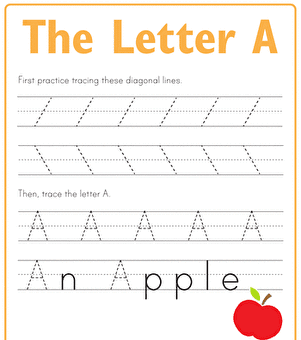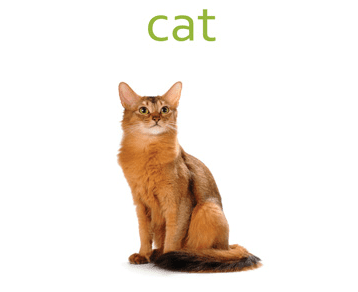How to Teach Students to Read Fluently
How to teach children to read

Teaching children to read is one of the almost complicated, arduous and time-consuming parts of teaching English. There're many approaches to teaching to read nowadays. However, I'll focus on ii pop and effective methods: Phonics and "Look and say".
Phonics
Phonics is a method of teaching young learners how to read which focuses on how letters brand sounds, and how these sounds make words. This approach is not meaning focused, information technology is but about decoding and pronunciation. Teachers are to put accurateness before speed because fluency (i.e. speed, accuracy, expression, and comprehension) volition come with time.
Phonics is the study of the relationship between the spoken and written language, i.due east. phonemic awareness and letter shape. Each alphabetic character or combination of letters represents a sound or sounds. The information is codified, as nosotros must be able to recognise which symbols make which sounds in order to read. Children are taught 44 letter sounds, which is a mix of alphabet sounds:
- grapheme (1 sound – 1 letter of the alphabet, e.k. c, t, a )
- digraphs (1 audio – 2 letters, east.g. sh, th, ai, ue )
- trigraphs (1 sound — 3 letters, e.m. ght )
This information is found in the Alphabetic Code . There's no one order you choose to teach phonics, but it's definitely better to go from unproblematic to more than complex phonics.
"Phonics involves the educational activity of the transparent alphabet (due east.g. /g/ as in «cat») before progressing onto the "opaque" alphabet (e.grand. /k/ every bit in «school»). In other words, children are taught steps which are straightforward and easy before being taught the complications and variations of pronunciation and spelling of the full alphabetic lawmaking"(© Wikipedia ).
Therefore children are get-go taught graphemes and loftier-frequency tricky words, then digraphs and trigraphs; then less frequency tricky words. Moreover, it'due south better to base phonics on the target vocabulary, so phonics are not separated from the main course and children learn as they proceed.
What are tricky words?
These are some words which don't follow hands recognisable patterns. Children have to learn these words in their entirety, by sight. Native speakers learn a lot of these at schoolhouse through poetry, so one way to teach them is to say a word that rhymes with the catchy word (for example, "shoe" rhymes with "zoo" and "key" rhymes with "tree"). Another good way to practise them is flashcard-type games.
When a kid is learning to read at that place are crucial things to acquire:
- how the sounds are represented past written letters;
- how to alloy (synthesise) the sounds together to make words;
- how to segment for spelling (due east.g. spell your name).
Children are taught to read messages or groups of letters by saying the sound(s) they stand for. For example, how to teach the word "true cat" using the Phonics method.
- Say the audio [chiliad].
- Have the student repeat the sound.
- Say the whole word, "cat" [kæt].
- Tell the pupil to repeat the whole word.
- Say some other words that outset with [k]: "cake", "cup", "coke".
- Prepare flashcards with dissimilar pictures. Say the words for the student to listen and cull the words with the sound [k] (to practice audio recognition)
- Tell the pupil to write the alphabetic character, then the discussion. (to practise tracing and letter recognition)

Teachers accept to read a full range of target vocabulary, sentences, comic strips, literature with the children and ensure that students have a total range of experience of activities associated with literacy such every bit function play, chants, songs, verse, just children are non expected to 'read' text which is beyond them, and the method does not involve guessing the meaning from context, picture, and initial letter clues. If students do not know or cannot read, a teacher reads for them.
This is a great 5-level form yous can use.
Pros of Phonics:
- Students larn sounds.
- They learn to read step by pace.
- It'south more comprehensible, consistent and based on Lexis.
- Children can read the words they don't know if they know the sounds spelling
Cons of Phonics:
- Students cannot start reading until they learn plenty sounds.
- They can read but the words with the sounds they know.
- Information technology can take a long time.
- This approach is not comprehension-focused.
Look and say
Phonics tin be compared with the whole word , or 'Wait and say' approach, which focuses on recognising words. This is a method of teaching reading based on the visual recognition and memorizing of words rather than by the association of sounds and messages.
For instance, using a "Look and say" approach a child may exist shown the word "cat" on a flashcard and is told, "cat". The child, over time, then learns that when they see the symbol "true cat", they are to say the word "cat". This way English becomes kind of a logographic language, that has thousands of detailed symbols that represent individual words.
Moving-picture show-words or sight words business relationship for up to 75% of the words used in beginning children's print materials. Sight word lists have been compiled based on loftier-frequency words, for example, the Dolch word list. These words are divided into levels which are prioritised and introduced to children co-ordinate to a frequency of appearance in first readers' texts.
 Pros of "Look and say":
Pros of "Look and say":
- Children learn loftier frequency and easy words fast.
- Students learnt how to read "similar" new words by association and discussion recognition. For example, "cat", "bat", "rat". Children recognize words automatically, as a result, a get-go reader will be able to identify the majority of words in a outset text earlier they even attempt to read it (in phonics approach they meet the like letter sounds, when in "Look and say" they see the similar symbols).
- It allows children to concentrate on meaning and comprehension as they read without having to stop and decode every unmarried give-and-take.
- Information technology helps to larn tricky words with unusual spelling, as they cannot exist sounded out using basic phonics knowledge.
Cons of "Look and say":
- Children are required to memorise thousands of words and cannot decode new words they come up across independently. Instead of having to remember but 26 letters and their matching phonemes, children accept to utilize their retention space to remember each and every word as a symbol.
- Children may be stuck in reading if they don't know how to read certain letters.
- Students may have difficulties with spelling.
- You always need an image: pictures or miming which doesn't piece of work well for abstract things of certain phrases.
Based on the information above I would recommend combining both methods to make teaching reading more than productive, comprehensible, logical and consistent.
Source: https://skyteach.ru/2018/11/29/how-to-teach-children-to-read/
0 Response to "How to Teach Students to Read Fluently"
Enregistrer un commentaire